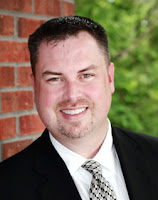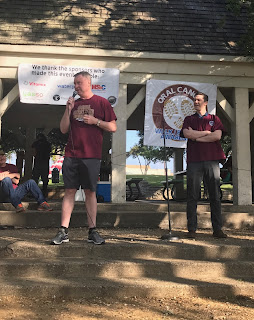All Mouth Rinses Are NOT Created Equal
Dennis M. Abbott, D.D.S.
This blog entry is written for the dental professional to give insight into the need for personalized oral healthcare during cancer and to increase awareness of the differences of mouth rinses commonly prescribed by oncologists.
Unfortunately, many people undergoing treatment for cancer experience oral problems at some point in their battle. Mouth sores can make everyday activities like eating or speaking difficult or impossible. Sometimes these ulcers, known as mucositis or stomatitis, can be very painful or increase the risk of infection spreading into the blood. Conditions in the mouth can even deteriorate to the point that they interfere with scheduled cancer therapies.
Often when people mention mouth problems to their oncologist, they are given a prescription for a compounded concoction and told to swish and spit. But what exactly is in these intraoral elixirs? And are they really what’s needed?
Two of the mouthwashes most popular with oncologists are Miracle Mouthwash and Magic Mouthwash. Despite the similar names, the two are not identical.
Miracle Mouthwash is made up of dexamethasone, tetracycline, nystatin, and diphenhydramine. Dexamethasone is a corticosteroid that is included in the mixture to decrease inflammation, but it also suppresses the immune system - which can be counterproductive. Tetracycline, an antibiotic that is generally safe even for people allergic to penicillin, kills a wide variety of bacteria. Bacteria can, however, develop a resistance to tetracycline, like many other antibiotics if it is used too frequently or in an inconsistent manner. Nystatin is an anti-fungal that is used to treat oral “thrush” or candidiasis. Diphenhydramine, the active ingredient in Benadryl®, is an antihistamine that is commonly used to treat allergy-related reactions such as itching or swelling. It is included in Miracle Mouthwash as an anti-inflammatory and to help manage minor pain.
Magic Mouthwash is a non-specific name for a rinse that is usually made up of at least three ingredients: viscous lidocaine, diphenhydramine, and an antacid like Maalox®. Lidocaine is an anesthetic commonly used in medicine and dentistry to control pain. Diphenhydramine is an anti-inflammatory; and the Maalox® is an antacid used as a coating agent. There is, however, no set formulation for Magic Mouthwash. In fact, Pharmacist’s Letter/Prescriber’s Letter #230703 gives recipes for 17 different rinses - all known as Magic Mouthwash. Some of these formulas add antibiotics, antifungals, and/or steroids. Some say “swish and spit”. Others say “swish and swallow”. So how do you know which one you will get; and more importantly, how do you know the Magic Mouthwash you pick up at the pharmacy will be the formula that is right for you?
Let’s face it...these mouth rinses are a shotgun-approach solution to a specific problem. While using a rinse with lidocaine may temporarily relieve the pain, biting your tongue or cheek while numb can open a whole host of other problems. Using one of these mouthwashes to simply manage pain subjects the user to what could be unnecessary antibiotics or antifungals and increases the risk that bacteria within the mouth will develop a resistance to the tetracycline, making treatment of future bacterial infections more difficult.
While there are definite benefits to each of the ingredients used individually, their efficiency in combination is inconclusive. The only well-designed study to test whether these mouthwashes improved chemotherapy-induced mucositis showed no difference between them and a saline rinse that could be made from simple household ingredients1. Furthermore, Magic Mouthwash was shown to be ineffective at shortening the healing time of oral mucositis related to cancer therapies2, which is what people with mucositis are really concerned about. Concern has also been expressed over the absorption of anesthetics such as lidocaine when applied to damaged mucosa3.
The modern approach to cancer care is to address the problem and minimize the collateral damage. We grow tumor cells in mice to understand patient-specific treatment. We evaluate genetic profiles to render a more unique approach to therapy. We utilize proton therapy and targeted cell drugs to minimize damage to anything but the tumor cells. Why then would we still expect a broad-range approach to dealing with mucositis? Why not manage the pain, if pain is present; treat the inflammation, if necessary; or care for the infection, if that is indicated?
The truth is, medical oncologists and radiation oncologists treat cancer. While some oncologists address the issue of mucositis, others do not. To compound the problem, there is not just one single causes of mucositis; therefore, there is not just one way to treat an outbreak. Mucositis can be a direct cytotoxic effect of a chemotherapeutic agent or a side effect of radiation to the head or neck. Mucositis can follow a bone marrow transplant or plague an individual with graft-versus-host disease. Managing only the pain misses the point that open sores in the mouth are a pathway into the bloodstream for infections of all types: bacterial, viral, or fungal. Treating only the infection without addressing pain management is neither kind nor conducive to improving quality of life. Care for mucositis is, therefore, often multi-faceted; but rather than taking a one-size-fits-all approach, the better answer is personalized treatment...just like you want for your cancer care. That’s where the specialized service of a dental oncologist can prove invaluable.
A dental oncologist is a dentist focused on meeting the unique oral health care needs of individuals battling cancer and trained to address the specific issues of cancer-related oral conditions like mucositis. Often, a dental oncologist can take a more specific approach to oral health care before, during, and after cancer therapy than other members of the oncology care team. A good dental oncologist will function as a team player, communicating directly with medical and radiation oncologists on your behalf, to ensure optimal care with a comprehensive approach.
Putting a team of professionals to work for you is the best approach. The result is personalized care that is specific to your needs: all your needs...from head to toe...inside and out.
References
1. Dodd MJ, Dibble SL, Miaskowski C, MacPhail L, et al. Randomized clinical trial of the effectiveness of 3 commonly used mouthwashes to treat chemotherapy-induced mucositis. Oral Surg Oral Med Oral Pathol Oral Radiol Endod. 2000;90:39- 47.
2. Clarkson JE, Worthington HV, Eden OB. Interventions for treating oral mucositis for patients with cancer receiving treatment. Cochrane Database Syst Rev 2007;(2):CD001973.
3. Rubenstein EB, Peterson DE, Schubert M, et al. Clinical practice guidelines for the prevention and treatment of cancer therapy-induced oral and gastrointestinal mucositis. Cancer 2004;100(9 Suppl):2026-46.
Dennis M. Abbott, D.D.S. is the founder and CEO of Dental Oncology Professionals of North Texas, an oral medicine practice dedicated to meeting the unique dental and oral health needs of patients battling cancer. He holds a Bachelor of Arts in biology from Rice University in Houston, and is an honor graduate of Baylor College of Dentistry. After dental school, Dr. Abbott studied immunology, microbiology, and oral medicine at the School of Dental Medicine, State University of New York at Buffalo. In addition to private practice, he is currently on the dental oncology medical staff at Baylor Charles A. Sammons Cancer Center and Baylor University Medical Center in Dallas.
Dr. Abbott has most recently conducted studies focusing on bisphosphonate-related osteonecrosis of the jaw and xerostomia in patients with cancer. He is the previous recipient of the Dentist Scientist Award and the National Research Service Award, both granted by the National Institutes of Health. Dr. Abbott has been a visiting faculty lecturer for the University at Buffalo School of Dental Medicine continuing education program and has lectured throughout the United States.


Comments
Post a Comment